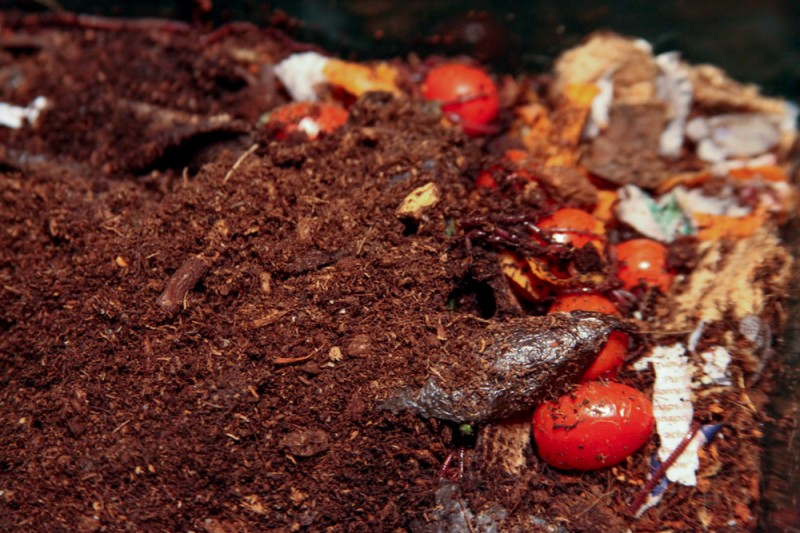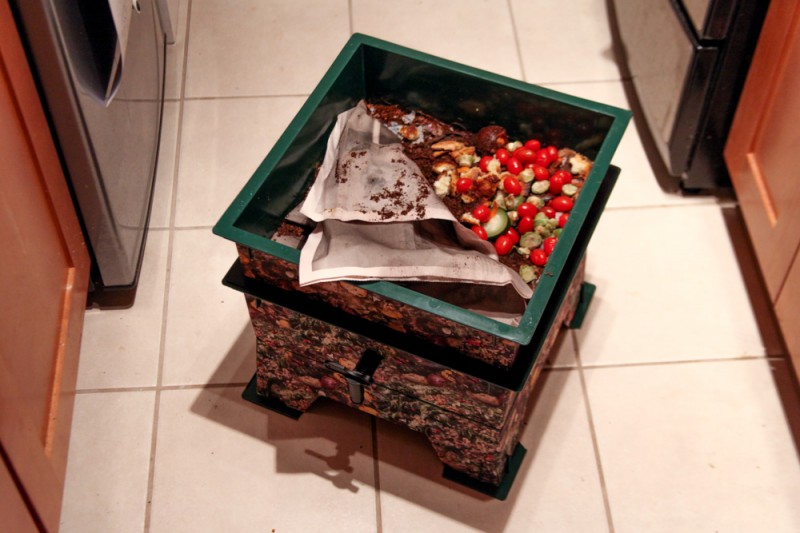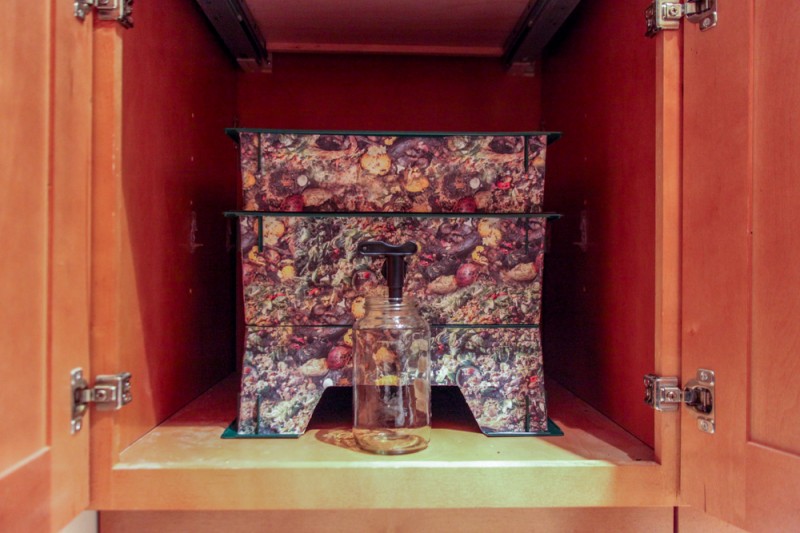For my final project in Soil as Medium, I followed through on my proposal for a worm bin designed to look like a pile of compost. Here it is, pictured below:
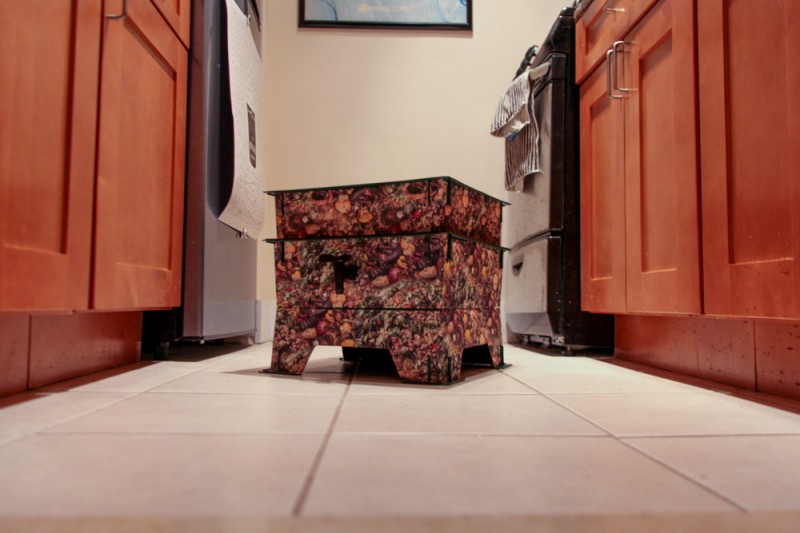
After ordering my Worm Factory, I prepared the wrap graphic from two pictures of a compost pile, tiled into a 20″x40″ texture, shown below. This would give me enough material to cover the front, left and right sides of the worm tower.
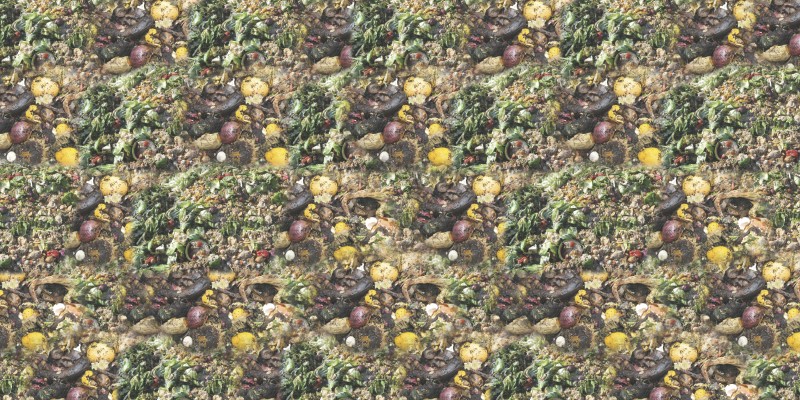
Once I had the texture printed out, I cut it to shape and applied the decal to each face of the bin.
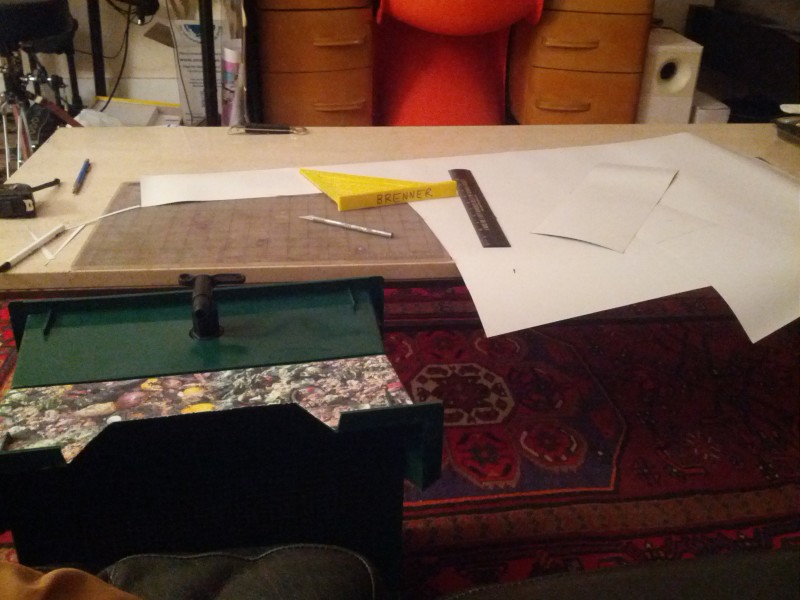
I had initially thought of making the fake compost rock from my midterm project. In switching to this more functional execution, I think my initial concept shifted as well. With my midterm project, products from SkyMall re-designed to suppress over-simplification of environmental systems, I was trying to tackle a rhetorical issue. The compost bin speaks both to a more specific audience (museum gift store patrons) and also directly to action rather than thought. If a $30 tea strainer designed to look like its < $1 counterpart is how the museum gift shop audience prefers to steep tea, then logically they would also prefer to compost with a $80 (plus my parts and labor) compost bin designed to look like a pile of food scraps. Here it is in action!
